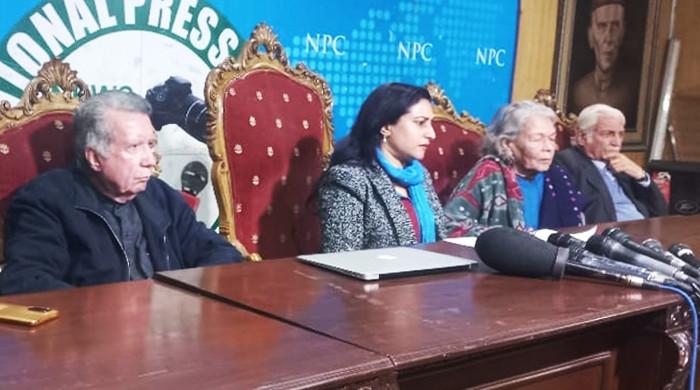By Simon Watkins – Nov 13, 2024, 5:00 PM CST
- Egypt has opened the Satis gas field for bidding.
- Egypt’s strategic position, with operational LNG export capacity and control of the Suez Canal, makes it a critical player in global energy trade.
- Egypt faces economic pressures, including currency devaluation and debt arrears to energy firms, but continues to enhance gas output and infrastructure.

Egypt is a key country to which Europe turned to provide gas supplies to help compensate for those lost from Russia following its invasion of Ukraine on 24 February 2022. The continent’s efforts to increase such output from the North African nation were aided by significant corollary investments from the U.S. A major new gas field has just been opened for bidding by Egypt, but it may come with strings attached.
The Satis gas field in the northern Mediterranean is part of the giant North El-Burg site and was previously operated in a joint venture between BP and the state-owned Egyptian Natural Gas Holding Company (EGAS). The British supermajor announced in February that it planned to invest up to $3.5 billion to develop its gas presence in Egypt in the coming three to four years. Around the same time it announced a joint venture (JV) with the United Arab Emirates’ (UAE) Abu Dhabi National Oil Company (ADNOC) – with BP holding the dominant 51 percent stake – in which it would focus on three developments out of the four covered under the JV. The North El-Burg site holding the Satis field was one, North Damietta containing the Atoll field was another, and Shorouk featuring the huge Zohr gas field was the final one (although Italy’s ENI would continue to take the lead operational role on this site). All these deals would be subject to individual regulatory approvals, according to BP, which in conjunction with various partners is responsible for about 70 percent of Egypt’s gas production in the West and East Nile Delta. The new bidding for Satis opened after BP exited the project after the contractual development period expired without production beginning, according to the firm.
Related: Iran Prepares for Potential Oil Export Cuts Under Trump
Although no further specific details were given by BP, perhaps a reason for its reluctance to press ahead with its usual gusto on such a project was the prospect of Egypt considering a policy of linking its payment arrears to international energy firms to increase production by them in the future. Ironically, it was the enormous wave of development of primarily Egypt’s gas reserves that helped exacerbate an already serious currency problem in the country in the past couple of years. Specifically, for example, Egypt owes Eni over US$1.25 billion for costs related to its energy developments, according to industry sources. However, the country’s ability to pay it off has been hit by the ongoing devaluation in of the Egyptian pound that began in earnest after Russia invaded Ukraine. Not only did this dramatically increase prices for wheat in the country (one of the world’s biggest importers of the foodstuff) but it also led to the removal of billions of dollars’ worth of foreign investment from the country as well. That said, on 6 March, Egypt was allowed by the IMF to expand its US$8 billion financial support package and there remain further offers of financial aid open from the World Bank and from the European Union. Given these assurances, 19 September saw Prime Minister Mostafa Madbouly announce that the country aims to restore normal production at its natural gas fields by next summer.
In this vein, its Petroleum Minister Karim Badawi said last week that he had undertaken reviews of several foreign companies’ ongoing projects in the country with a view to their expanding output. The review of British supermajor Shell’s operations focused on it acquiring a new exploration area in the Mediterranean and its plans to bring the first wells in the West Mediterranean’s North Cleopatra and North Marina fields into production by the end of 2025 at the latest. Badawi also met with senior executives from Eni to discuss its development plan for the Western Desert’s Meleiha field, as well as the Nargis field where it is collaborating with U.S. giant Chevron. Further increases in output were discussed from Eni’s fields in Sinai and the Gulf of Suez and the huge Zohr gas field, following comments in July that it is planning to drill two new wells in the Zohr site in the second half of 2025, with investments estimated at US$160 million. These conversations also continued developing the idea of connecting gas output from Eni’s Eastern Mediterranean fields to Egypt’s liquefaction facilities for re-export to Europe. In February, Eni announced the completion of the Cronos-2 well in the Eastern Mediterranean, which it now estimates to have a production capacity of over 150 million standard cubic feet per day. This was the fourth well drilled by the Italian firm in Block 6, which it operates alongside France’s TotalEnergies. Eni also operates Blocks 2, 3, 8, and 9, and has active interests in Blocks 7 and 11 operated by TotalEnergies. For its part, the French supermajor’s CEO Patrick Pouyanné recently discussed with Badawi the firm’s progress on the Cronos field and strategies to link its production to Egypt’s facilities.
Given the scale and scope of such plans, the Satis field – with official estimated gas reserves of over 1 trillion cubic feet of high-quality gas — is unlikely to struggle to find new bidders. It will form part of Europe’s ongoing search to dramatically increase its reliable supplies of gas, both through pipelines and in liquefied natural gas (LNG) form. Over and above Egypt’s conservatively estimated gas reserves of around 1.8 trillion cubic metres, it is also the only country in the Eastern Mediterranean gas hotspot region with operational LNG export capacity and is consequently ideally placed to become the top regional export hub for the gas. Crucially as well is that its geographic positioning means that it controls the major global shipping chokepoint of the Suez Canal, through which around 10 percent of the world’s oil and LNG is moved. It also controls the vital Suez-Mediterranean Pipeline, which runs from the Ain Sokhna terminal in the Gulf of Suez, near the Red Sea, to Sidi Kerir port, west of Alexandria in the Mediterranean Sea. This is a crucial alternative to the Suez Canal for transporting oil from the Persian Gulf to the Mediterranean. The Suez Canal importance to the global energy sector is further boosted by the fact that it is one of the very few major transit points that is not controlled by China. Specifically, Beijing already has effective control over the Strait of Hormuz through the all-encompassing ‘Iran-China 25-Year Comprehensive Cooperation Agreement’, as first revealed anywhere in the world in my 3 September 2019 article on the subject and analysed in my latest book on the new global oil market order. The same deal also gives China a hold over the Bab al-Mandab Strait, through which commodities are shipped upwards through the Red Sea towards the Suez Canal before moving into the Mediterranean and then westwards. This has been achieved as it lies between Yemen (the Houthis having long been supported by Iran) and Djibouti (over which China has also established a stranglehold through debts connected to its multi-generational power-grab project – the ‘Belt and Road Initiative’).
Finally, from the West’s geopolitical perspective, Egypt has long been regarded as at least as much of a leader in the Arab world as Saudi Arabia has ever been. It was a leading proponent of the ‘Pan-Arab’ ideology that posited that enduring strength can only be found in the political, cultural, and socioeconomic unity of Arabs that emerged after the two World Wars. The idea found one of its two key champions in Egypt’s president from 1954 to 1970, Gamal Nasser. Among the most palpable signs of this movement at the time was the formation of the United Arab Republic union formed between Egypt and Syria from 1958 to 1961, the formation of OPEC in 1960, the series of conflicts with neighbouring Israel over the period, and then the 1973/74 oil embargo, as also analysed in full in my latest book. By bringing this leader of the Arab world on side, the U.S. and its allies hope to offset the negative geopolitical impact of long-term ally Saudi Arabia having been lost to the China-Russia bloc.
By Simon Watkins for Oilprice.com
![]()
Simon Watkins
Simon Watkins is a former senior FX trader and salesman, financial journalist, and best-selling author. He was Head of Forex Institutional Sales and Trading for…
Related posts
Note: This article have been indexed to our site. We do not claim legitimacy, ownership or copyright of any of the content above. To see the article at original source Click Here













